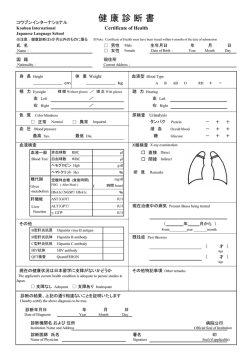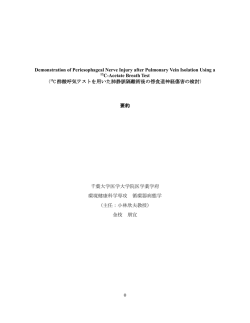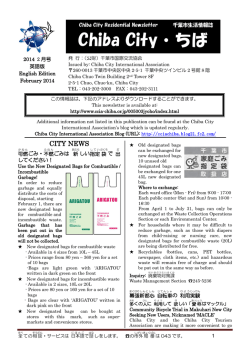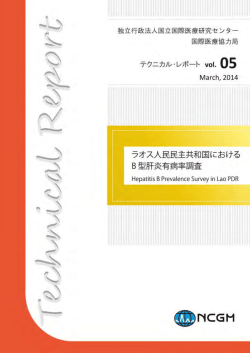
Materials and Methods
【要約】 The effect on gastric emptying of telaprevir-based triple therapy for chronic hepatitis C patients (C 型慢性肝炎に対するテラプレビルを用いた3剤併用療法の胃排 出能への影響) 千葉大学大学院医学薬学府 先進医療科学専攻 消化器病態学 (主任:横須賀 收 小山田 新 1 教授) Oyamada A et al. The effect on gastric emptying of telaprevir-based triple therapy for chronic hepatitis C patients Arata Oyamada , Makoto Arai , Tomoaki Matumura , Kenichiro Okimoto , Shoko Minemura , Keiko Saito, Daisuke Maruoka , Tomoo Nakagawa , Tatsuo Kanda , Tatsuro Katsuno , Osamu Yokosuka Department of Gastroenterology and Nephrology, Graduate School of Medicine, Chiba University Corresponding author: Makoto Arai M.D. Department of Gastroenterology and Nephrology 2 Oyamada A et al. Graduate School of Medicine, Chiba University Inohana 1-8-1, Chiba-City, 260-8670, Japan TEL: +81-43-226-2083 FAX: +81-43-226-2088 E-mail: < [email protected] > Keywords: gastric emptying, hepatitis C, telaprevir, interferon Running head: Telaprevir-based triple therapy affected gastric emptying Abbreviations: GI gastrointestinal GE gastric emptying Tmax peak time of 13CO2 excretion Acknowledgement statement: No authors have a conflict of interest in this study. 3 Oyamada A et al. Abstract Aim: Telaprevir-based triple therapy (telaprevir, pegylated-interferon, and ribavirin) is a standard treatment for chronic hepatitis C patients. Loss of appetite and nausea are major adverse events that may lead to discontinuation of treatment or a decrease in the dose of the drugs. Gastric emptying (GE) is a major function of the stomach and its disruption is related to various diseases. In this study, we evaluated food intake in telaprevir-based triple therapy and its relation to GE. Methods: From September 2012 to October 2013, 17 patients (54.1 ± 8.4 years old) received telaprevir combined with pegylated interferon plus ribavirin at Chiba University Hospital. The study was approved by Chiba University Hospital Institutional Review Board (UMIN000012279). The food intake and body weight of each patient were determined daily. The GE study was carried out using the 13C-acetate breath test and GE time was expressed as the peak time of 13 CO2 excretion (Tmax). GE was evaluated three times at 0, 1, and 2 weeks after the start of treatment. At the same time points, the acyl-ghrelin, desacyl-ghrelin and leptin levels also were determined. Results: The average food intake was 1,851 ± 91, 1,338 ± 537 and 1,453 ± 537 kcal at 0, 1, and 2 weeks after the start of treatment, respectively, showing a significant decrease compared to that before treatment (p < 0.01 and p <0.05, paired t-test). Loss of body 4 Oyamada A et al. weight was observed at 1 and 2 weeks after the start of treatment, and this was significant (-3.2 ± 2.6 % and -3.6 ± 2.1 %, p < 0.01 and p <0.05, paired t-test). The averages of Tmax values at 0, 1, and 2 weeks after the start of treatment were 48.4 ± 14.3 min, 56.9 ± 18.4 min and 58.0 ± 19.9 min, respectively, indicating that the telaprevir-based treatment delayed GE. There was a significant difference between baseline and 1 week after the start of treatment (p<0.05, paired t-test). Food intake (kcal) showed a good correlation with the decrease of Tmax values (minutes) (Pearson’s correlation test, r = -0.49, p < 0.05). The levels of acyl-ghrelin and desacyl-ghrelin did not a change significantly change, in contrast, the leptin level at 2 weeks after the start of treatment (5.3 ± 2.4 ng/ml) was lower than that at baseline(7.5 ± 3.3 ng/ml) a significant difference (p < 0.01, paired t-test). Conclusions: Telaprevir-based triple therapy for chronic hepatitis C patients caused reduced food intake and a loss of body weight, and worsened GE. The deterioration of GE is a major cause of reduced food intake. The use of drugs to improve GE could avoid the loss of appetite and body weight, which might result in raising the rate of accomplishing treatment and achieving a sustained virological response. 5 Oyamada A et al. Hepatology international 平成 25 年 12 月 投稿中 6
© Copyright 2025





